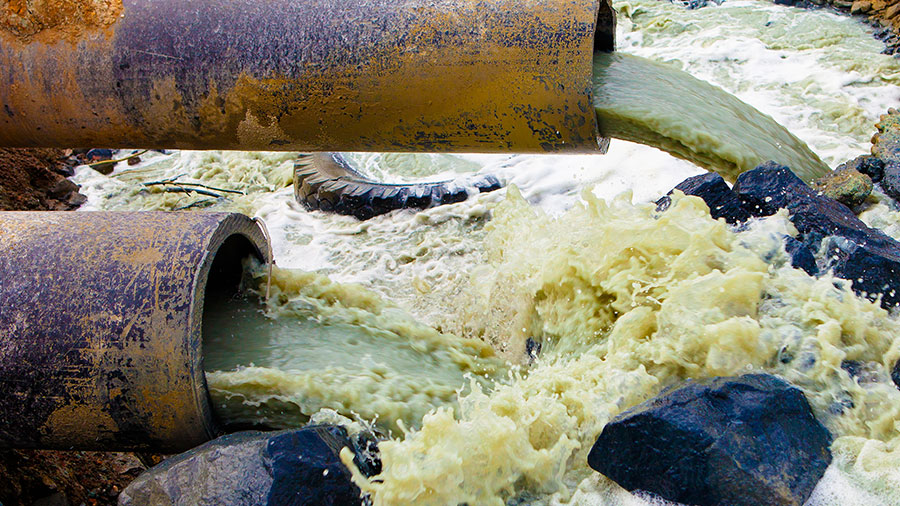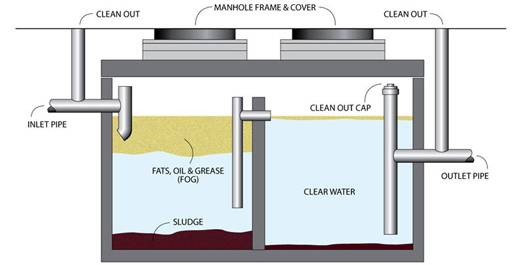Professional Liquid Waste Removal Melbourne: Maintaining Your Setting Tidy
Exactly How Liquid Garbage Disposal Works: A Comprehensive Review of Strategies and Technologies Utilized

Review of Liquid Waste Types
The intricacy of fluid waste kinds requires a detailed understanding of their features and effects for disposal. Fluid waste can generally be classified into numerous kinds, consisting of commercial, local, agricultural, and dangerous waste. Each category exhibits distinctive properties, calling for certain management techniques to mitigate ecological and wellness dangers.
Industrial liquid waste originates from producing processes and often has a series of impurities, such as heavy steels, solvents, and organic compounds. Metropolitan liquid waste, mostly making up wastewater from homes and business facilities, contains natural issue, nutrients, and virus (industrial wastewater treatment). Agricultural liquid waste, consisting of overflow from ranches, may consist of fertilizers, chemicals, and animal waste, posturing dangers to water top quality and environments
Unsafe liquid waste is defined by its toxicity, sensitivity, or potential to trigger injury. Recognizing these varied liquid waste types is critical for developing effective disposal techniques and making sure compliance with environmental policies.
Physical Treatment Techniques

Testing is the initial action, where larger fragments and particles are eliminated from the liquid waste making use of screens or grates. In sedimentation tanks, heavier particles resolve at the bottom, forming a sludge layer, while the cleared up liquid can be further treated.
Purification is one more vital method that includes passing the liquid through permeable materials, such as sand or membrane layers, to catch smaller sized bits. This step enhances the high quality of the liquid, making it appropriate for subsequent treatment processes.

Chemical Treatment Strategies
Chemical therapy techniques are necessary for efficiently taking care of liquid waste, specifically in addressing liquified and colloidal pollutants that physical approaches may not appropriately eliminate. These methods utilize numerous chemical agents to reduce the effects of, precipitate, or change dangerous compounds into less dangerous forms.
One usual technique is coagulation and flocculation, where chemicals such as alum or ferric chloride are contributed to advertise the aggregation of put on hold bits. This process improves sedimentation, enabling much easier elimination of the resulting sludge. Furthermore, oxidation procedures, employing agents like chlorine or ozone, are utilized to damage down intricate natural substances and pathogens, rendering the waste much safer for discharge or additional therapy.
Neutralization is an additional important technique, which changes the pH of acidic or alkaline waste streams to neutral levels, protecting against possible harm to downstream systems and the environment. In addition, progressed oxidation procedures (AOPs) make use of mixes of oxidants and ultraviolet light to weaken persistent contaminants, achieving a higher level of treatment efficiency.
Biological Therapy Procedures
Organic therapy procedures play an essential role in the administration of fluid waste by making use of microbes to decompose raw material and lower contaminant levels. These processes can look at this now be broadly classified right into anaerobic and cardiovascular therapies, each employing specific microbial areas to attain efficient waste deterioration.
Cardio therapy entails making use of oxygen to assist in the break down of organic products by bacteria. This process is commonly applied in triggered sludge systems, where aeration tanks give a helpful atmosphere for microbial growth, leading to the oxidation of natural contaminants. The resultant biomass can be separated from treated effluent through sedimentation.
In comparison, anaerobic treatment moved here occurs in the lack of oxygen, depending on different bacteria to damage down natural matter. This approach is especially advantageous for high-strength waste, as it generates biogas, a renewable power source, while lowering sludge production. Technologies such as anaerobic digesters are regularly utilized in local and industrial applications.
Both aerobic and anaerobic biological treatments not only minimize the ecological impact of liquid waste but likewise help with resource healing, making them important parts of sustainable waste monitoring strategies. Their efficiency, versatility, and efficiency support their prevalent implementation across different industries.
Arising Technologies in Disposal
Cutting-edge methods to liquid garbage disposal are swiftly developing, driven by improvements in innovation and a boosting emphasis on sustainability. Among these emerging modern technologies, membrane bioreactors (MBRs) have gotten traction for their Read Full Article capability to combine organic therapy with membrane layer filtering, leading to top notch effluent that can be recycled in numerous applications. MBRs allow smaller footprints and more reliable operations compared to typical systems.
An additional promising advancement is making use of anaerobic digestion combined with nutrient recuperation innovations, which not just deals with liquid waste yet likewise creates biogas and recuperates beneficial nutrients like nitrogen and phosphorus. This twin benefit boosts resource efficiency and reduces ecological influence.
Additionally, progressed oxidation procedures (AOPs) are being taken on for the deterioration of complicated organic toxins. These techniques use effective oxidants and catalysts to break down impurities at the molecular level, providing a very efficient remedy for tough waste streams.
Additionally, the integration of expert system and artificial intelligence in waste administration systems is enhancing operational performance and anticipating maintenance, resulting in reduced prices and enhanced environmental conformity. These technologies show a significant shift in the direction of more lasting and effective fluid waste disposal practices.
Final Thought
To conclude, efficient liquid garbage disposal necessitates a thorough understanding of different strategies and innovations. The combination of physical, chemical, and biological therapy approaches makes sure the reliable administration of varied waste kinds. Additionally, the appearance of ingenious modern technologies enhances therapy efficiency and advertises sustainability in waste administration techniques. By continuously advancing these techniques, it becomes feasible to deal with the expanding challenges connected with fluid waste, ultimately adding to environmental management and resource healing.
Fluid waste disposal is a vital facet of environmental administration, needing a thorough understanding of numerous methods and technologies tailored to different waste types. Liquid waste can broadly be categorized into several types, including industrial, municipal, agricultural, and hazardous waste. Agricultural fluid waste, consisting of drainage from ranches, may consist of fertilizers, pesticides, and pet waste, presenting threats to water top quality and ecosystems.
Numerous physical therapy techniques play a vital function in handling liquid waste effectively - industrial wastewater treatment.In verdict, reliable fluid waste disposal necessitates a comprehensive understanding of various strategies and innovations